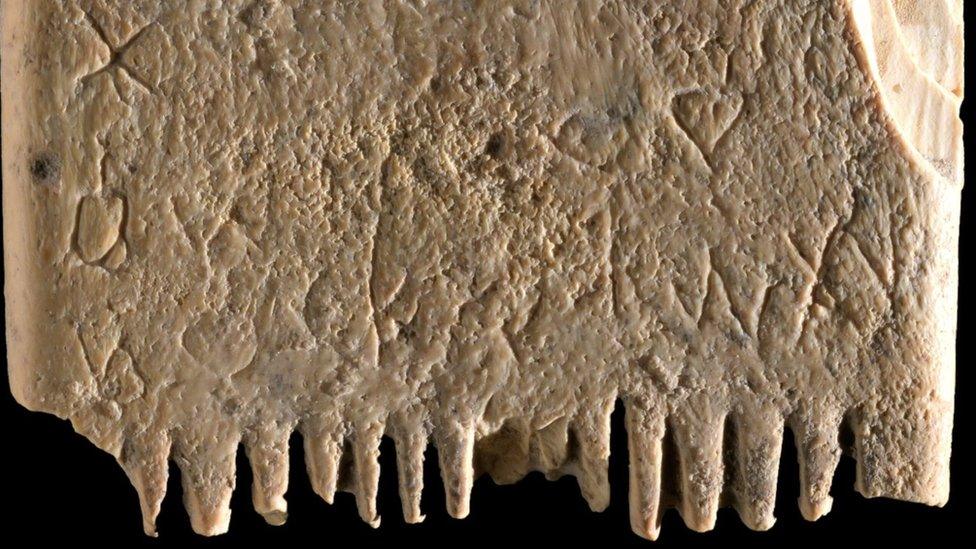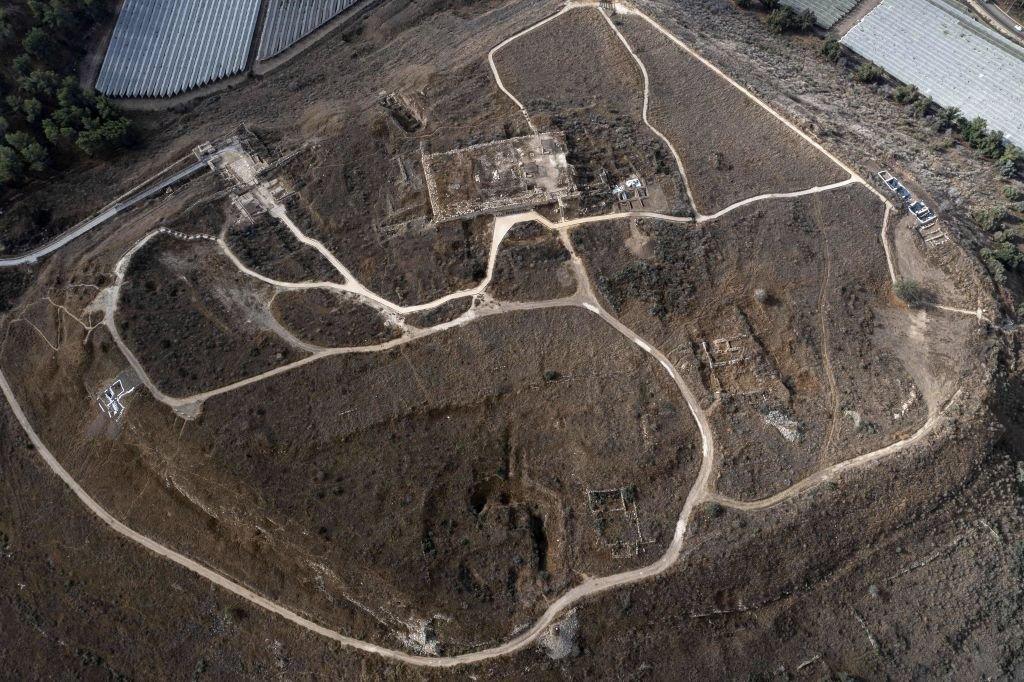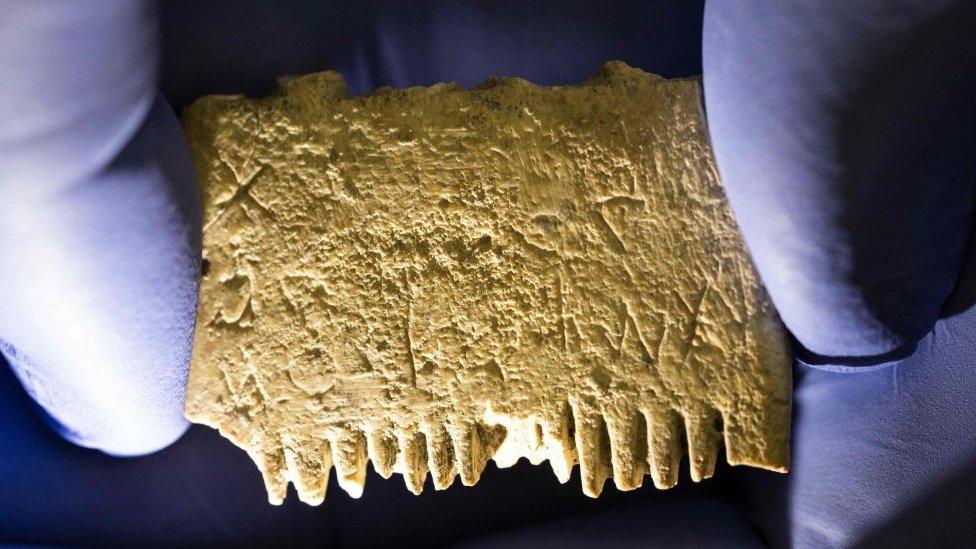The 4,000 year old nit comb inscribed with the oldest sentence ever discovered.
- Published
- comments

Researchers have translated the first sentence ever discovered written in the ancient language of Canaanites - and it's on a nit comb.
The Canaanites were the first people thought to have used an alphabet. They lived around four thousand years ago in the land of Canaan, which today includes areas of Israel, Palestine, Lebanon, Syria, and Jordan.
Made from ivory, which is a material found in the tusks of elephants, the comb was used to get nits out of beards.
Researchers know this for definite because that's exactly what the inscription on the comb says. Nice!
The comb is designed much like the nit combs you can buy in shops today, with thick teeth to untangle knots on one side and fine teeth to remove lice and their eggs on the other.
The sentence on the comb, written around 3,700 years ago is the first meaningful inscription dating from around the time that the first alphabet was created.

An aerial picture shows the Tel Lachish archaeological site, a key Canaanite city about 25 miles southwest of Jerusalem
What does the writing on the comb say?
Found in Tel Lachish in Israel in 2017, the letters were only noticed earlier this year by an archaeologist.
On the comb it reads: 'May this tusk root out the lice of the hair and the beard.'
"This is the first sentence ever found in the Canaanite language in Israel," said Professor Yosef Garfinkel, from the Hebrew University of Jerusalem.
"This is a landmark in the history of the human ability to write," he added.

Researchers took high-resolution images of the comb using a microscope, and actually found some remains of head lice still present.
It's thought the comb was a luxury item imported from Egypt, which experts say reveals lice were a problem for even the most wealthy in society at that time.
- Published29 December 2021

- Published20 October 2023

